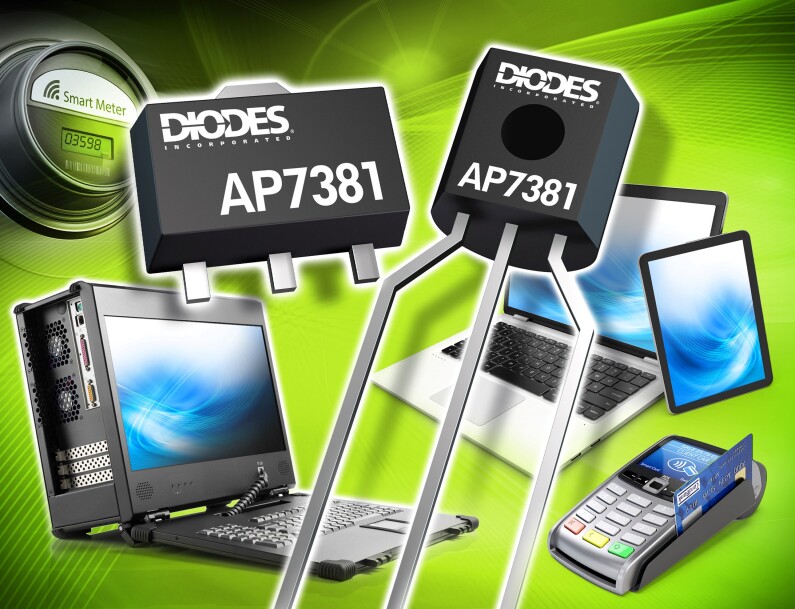LDOs Offer Parental Guidance for Embedded Electronics

By WenLong Zhu, Senior Technical Marketing & Program Manager
We all need to let off steam once in a while but, generally speaking, we know when to stop; we can self-regulate our behavior because we are responsible adults. Children, on the other hand, often get a free pass or two when it comes to their behavior because it is all part of the learning process and, possibly, what some adults dislike most about being a grown-up.
While embedded electronics have a lot of smarts, we couldn’t really say they ‘learn’ to self-regulate their behavior. Our circuits are like our children, they may be really clever at doing some things, but at others they still need a little help.
Normally it will be factors outside our control that test our ability to self-regulate our behavior, and the same is true for electronic circuits. It’s the unexpected that causes problems and this is probably most apparent when it comes to power.
Fluctuations in power can cause major problems for sensitive analog and digital electronics. Ultimately, integrated circuits work at an abstract level, by representing ‘real world’ parameters with voltage levels that are relative to the power supply. If the power supply starts to behave badly and we don’t have any way of regulating it, the integrity of the whole system comes into question.
Mitigation against power disruptions
While a five-year-old having a meltdown in a toy shop can be embarrassing, it doesn’t normally cause any long lasting damage. The same can’t be said for an electronic device that suddenly decides it doesn’t want to control that large machine any more. In a connected world, even something as seemingly inconsequential as losing a few bytes of data can have serious repercussions.
So how do we protect our ‘children’ from the unknown? It is a question that keeps parents awake at night, as well as engineers. A reliable supply of power is something we take for granted at a macro level, our homes and offices rarely suffer from power outages and, if they do, we have back-up systems such as Uninterruptible Power Supplies that keep us going, at least for a while.
At a micro level the same is true, in the form of hold-up capacitors and battery-backups. But these can’t always protect our sensitive circuits from sudden, frequent or sustained variations in power supply levels, which is what really counts. This is where regulation has to step in.
Regulation is applied at the power conversion stage as standard practice and as the concepts of the Intermediate Bus and Point of Load take hold it is becoming more common and necessary to apply regulation closer to the point of use. Even so, some smaller systems can still rely on a single regulated power line, bussed across an entire PCB to supply a large number of devices. As the transistor density and capability of ICs increases they are demanding more power, often during bursts of activity (much like a five-year-old demands more attention when you least have time to give it). These bursts of activity can have a serious effect on the power line, causing droop and transients that could disrupt the operation of all devices supplied from the same line.
LDOs helps us all play nicely together
The real problem is that each device attached to the power bus has its own requirements and they rarely align. For example, if one device knows it is about to go into a burst of high activity and will need 10% more power for 100ms, it could ask all the other devices on the supply to go into low power mode, or it could alert the power regulator to increase the total power available. There are developments in this direction but for the most part this scenario remains unworkable, instead developers are turning to the Low Dropout regulator, or LDO, to provide the solution.
An LDO provides local regulation from a power line that can experience fluctuations. Typically, an LDO would only service one or a small number of components, providing a stable, constant voltage or current to a variable load. The variations in load do not result in power supply droop, because the LDO has enough headroom between the input and the output voltages to maintain regulation. LDOs are normally linear and fully integrated into small packages, which means they can be placed close to a load and used liberally, even in small PCBs. Devices like the AP7381 are designed to provide a constant voltage for USB ports, for example, where the load could be attached and removed several times while the device is powered up. In this case, a good Power Supply Rejection Ratio, or PSRR, is also important; the AP7381 has a PSRR of 60dB. Because LDOs like this are often used in battery-powered devices, they also need to be low power themselves and the AP7381 boasts a quiescent current of just 2.5µA.
Embedded electronics can be as precocious as a small child, and just as fickle. With a steady hand and strong parental guidance our offspring make it to maturity and become useful members of society. By applying the same good judgement to embedded design, engineers can equip their circuits with the self-regulation needed to withstand the harsh environments they may find themselves in once they have left the family nest.
